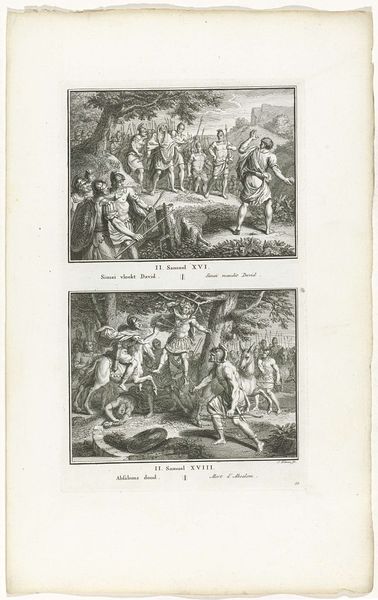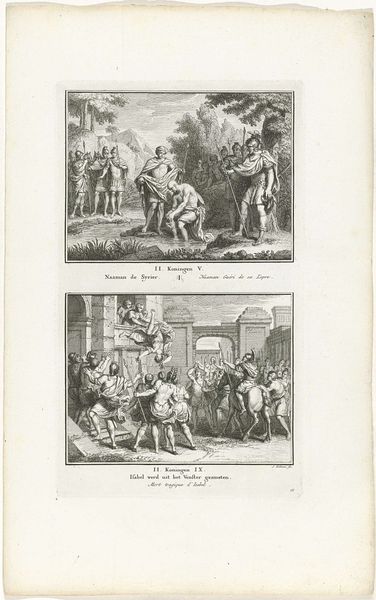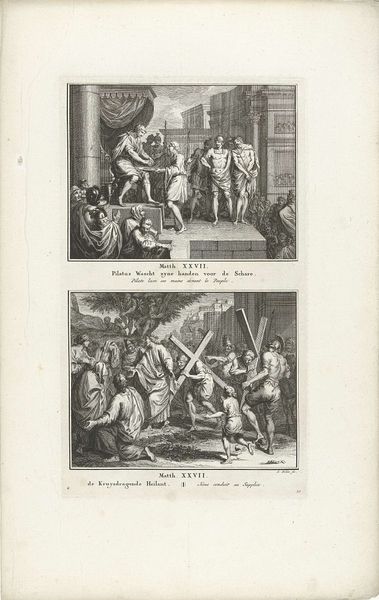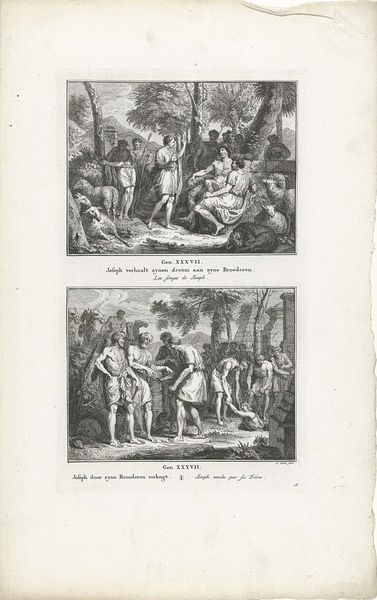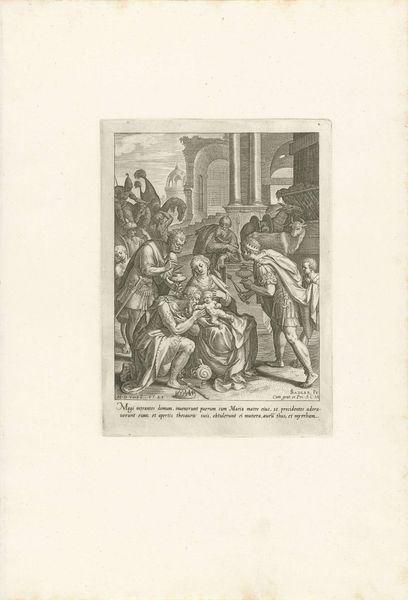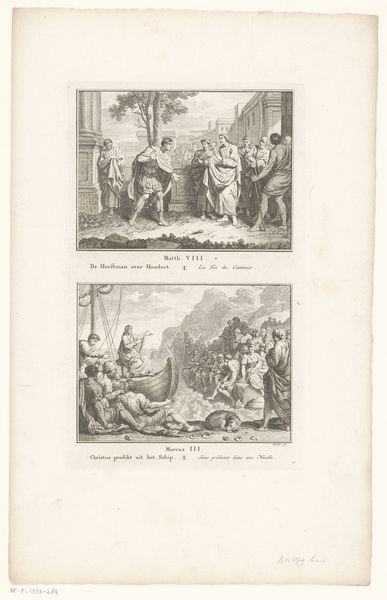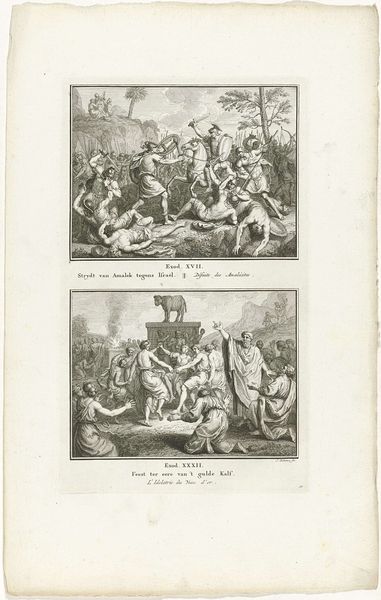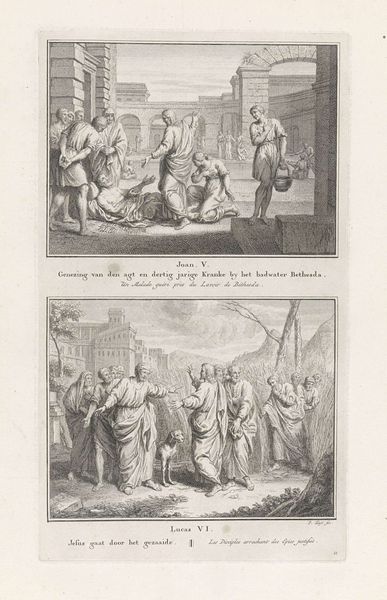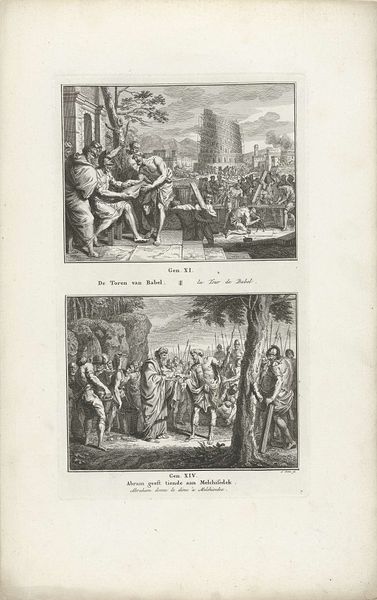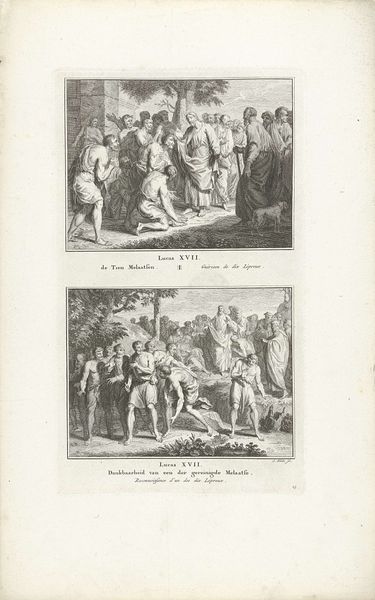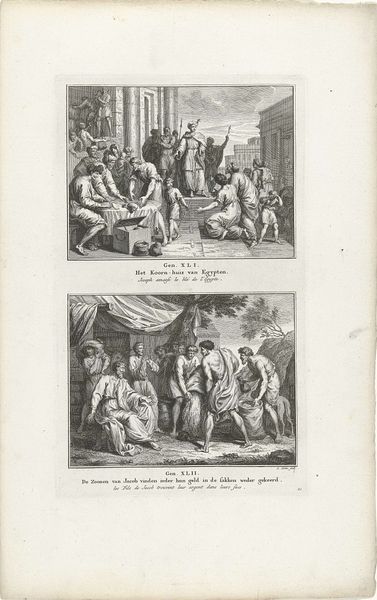
drawing, print, engraving
#
drawing
#
narrative-art
# print
#
history-painting
#
engraving
Dimensions: height 323 mm, width 193 mm
Copyright: Rijks Museum: Open Domain
Editor: This is a combined engraving from 1791 by Simon Fokke, titled "Begrafenis van Sara en de knecht van Abraham spreekt met Rebekka" which translates to "The Funeral of Sarah and Abraham's servant speaks with Rebecca." It depicts two scenes stacked on top of each other, each telling a story. I find it fascinating how different the two scenes feel despite being rendered in the same style. What do you see in this piece from a historical context? Curator: This print, combining scenes from Genesis, speaks volumes about the role of religious narratives in late 18th-century Dutch society. We see two distinct moments from Abraham's story, highlighting themes of death and new beginnings, faith and divine providence. What do you notice about the visual language used? Does it connect to contemporary artistic or social trends? Editor: I see very classical compositions. Both scenes are very balanced, with figures arranged almost like actors on a stage. Does this reflect a specific artistic movement? Curator: Precisely. The neoclassical style, popular during this period, emphasized order, reason, and references to classical antiquity. But consider, too, how these biblical scenes would have functioned within the domestic sphere. Prints like these were often displayed in homes, serving not just as decoration, but as moral and educational tools. What political or social values do you think were reinforced through the dissemination of such images? Editor: Perhaps promoting family values and religious faith, particularly during a time of political and social upheaval in Europe. Curator: Exactly! Prints were a powerful means to circulate ideas and reinforce social norms. The choice to depict these specific scenes speaks to the values that society wished to uphold and emulate. Do you think it possible the print's scenes would reinforce the accepted role of women in society? Editor: It probably subtly does; Sarah's scene is somber and reflective, while Rebecca is giving water, depicting domestic labor. I hadn’t thought of this work being used in so many social contexts. Thank you! Curator: My pleasure. Examining art through its historical usage reveals the layers of meaning embedded within. It enriches our understanding of both the artwork and the society that produced it.
Comments
No comments
Be the first to comment and join the conversation on the ultimate creative platform.

